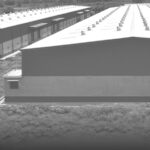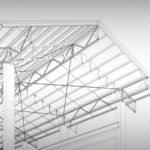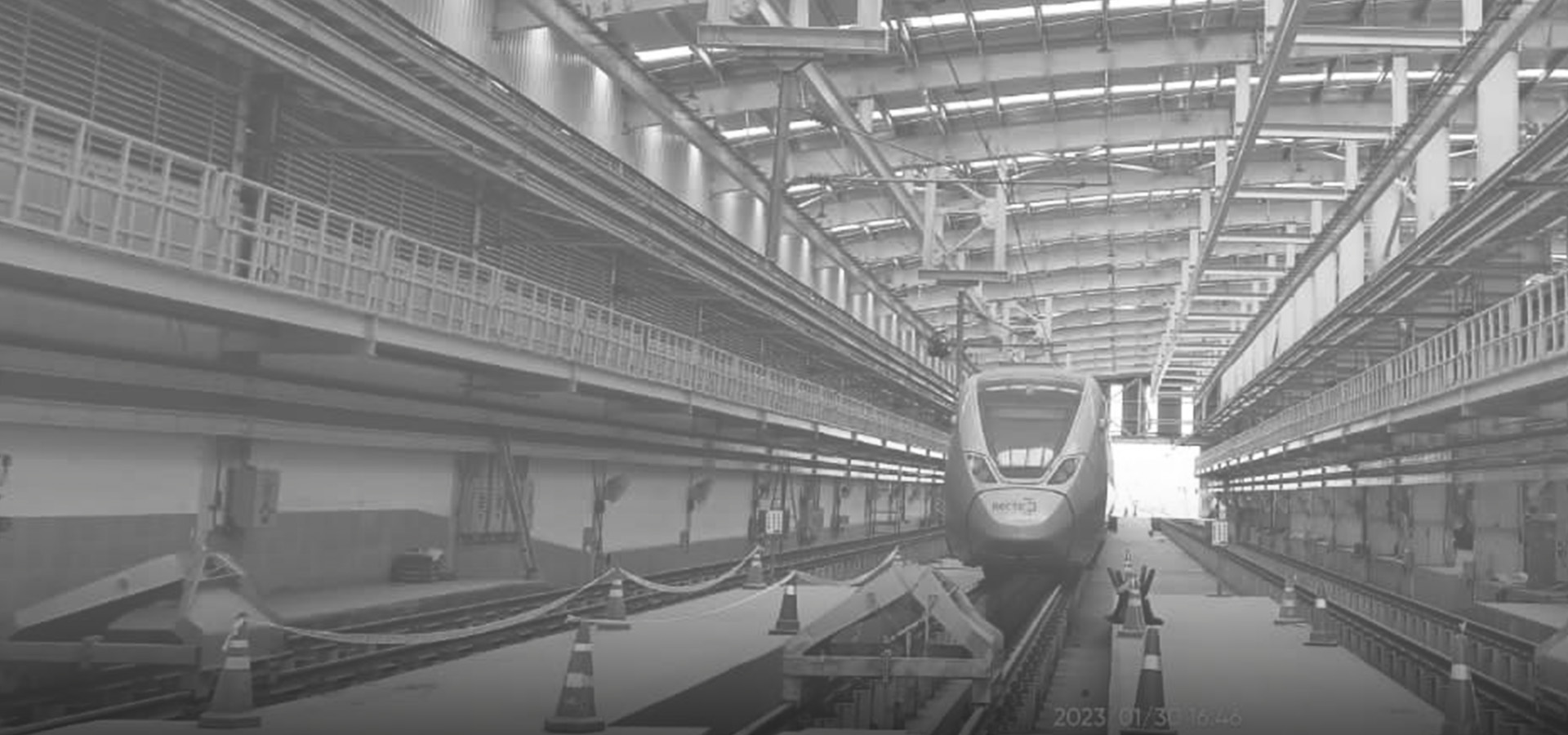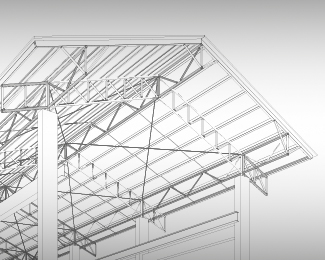Quality Control In PEB Manufacturing: Ensuring Structural Integrity And Safety
Introduction
Quality control plays a pivotal role in the manufacturing process of Pre-Engineered Buildings (PEBs) as it ensures the structural integrity and safety of these modern construction marvels.
PEBs have gained significant popularity in recent years due to their cost-effectiveness, quick construction time, and design flexibility. However, to guarantee that PEBs meet the required standards and specifications, rigorous quality control measures must be implemented throughout the manufacturing process.
Importance of Quality Control in PEB Manufacturing
The construction industry, including the PEB sector, operates within strict regulatory frameworks and safety standards. Quality control is a fundamental aspect of meeting these requirements and ensuring that PEBs are structurally sound and safe for use. Here are some key reasons why quality control is crucial in PEB manufacturing:
1. Structural Integrity: PEBs are designed to withstand various loads and environmental conditions. Quality control ensures that the building’s structural components, such as columns, beams, and roof systems, are manufactured to the required strength and durability standards.
2. Safety Assurance: PEBs are occupied by people and often used for commercial or industrial purposes. Implementing quality control measures guarantees that the building is safe for occupants, reducing the risk of accidents, structural failures, or collapses.
3. Compliance with Regulations: PEB manufacturers must adhere to local building codes, regulatory standards, and industry guidelines. Quality control ensures that the PEB manufacturing process meets these requirements and ensures compliance.
4. Customer Satisfaction: PEB manufacturers strive to deliver high-quality buildings that meet or exceed their clients’ expectations. Effective quality control helps manufacturers maintain customer satisfaction by ensuring the final product meets the desired standards.
Significance of Structural Integrity and Safety in PEBs
Structural integrity and safety are of utmost importance in any construction project, and PEBs are no exception. These buildings are subjected to various stresses, including wind loads, seismic forces, and heavy equipment. Ensuring the structural integrity and safety of PEBs is crucial for the following reasons:
1. Occupant Safety: PEBs are occupied by people who rely on the building’s structural integrity to provide a safe environment. Whether it’s a warehouse, factory, or commercial space, occupant safety is paramount, and quality control plays a vital role in achieving this.
2. Risk Mitigation: PEBs are often located in areas prone to natural disasters such as earthquakes, hurricanes, or heavy snowfall. By implementing quality control measures, manufacturers can minimize the risks associated with these events and enhance the resilience of the building.
3. Longevity and Durability: PEBs are intended to have a long lifespan. Quality control ensures that the materials and components used in manufacturing are of high quality, leading to enhanced durability and longevity of the building.
4. Reputation and Trust: Quality control practices contribute to a manufacturer’s reputation and trustworthiness. By consistently delivering high-quality PEBs, manufacturers build trust with clients, leading to repeat business and positive word-of-mouth recommendations.
In the following sections, we will delve deeper into the key aspects of quality control in PEB manufacturing, exploring the material inspection and testing, manufacturing process control, non-destructive testing techniques, quality control procedures and techniques, the role of technology, training and certification for quality control personnel, and successful case studies. We will also discuss future trends and challenges in the field of quality control for PEB manufacturing.
By adhering to rigorous quality control measures throughout the manufacturing process, manufacturers can deliver PEBs that meet high standards and withstand the test of time.
In the subsequent sections, we will explore the various aspects and practices involved in quality control for PEB manufacturing, shedding light on the crucial steps and advancements in this vital field.
Understanding Quality Control in PEB Manufacturing
Quality control is an integral part of the manufacturing process for Pre-Engineered Buildings (PEBs) to ensure the production of high-quality, structurally sound, and safe structures. This section provides a comprehensive understanding of quality control in PEB manufacturing, including its definition, scope, and key objectives. We will also explore the regulatory standards and codes that govern quality control practices in this field.
A. Definition and Scope of Quality Control
Quality control refers to the systematic processes and procedures implemented to monitor and verify that PEBs meet the desired standards and specifications. It involves various measures to ensure that the materials used, fabrication techniques employed, and finished components comply with industry regulations and customer requirements.
The scope of quality control in PEB manufacturing is broad and encompasses multiple aspects, including:
1. Material Selection and Inspection: Quality control begins with the careful selection of raw materials, such as structural steel, roofing sheets, insulation, and fasteners. It involves inspecting these materials upon receipt to ensure they meet the necessary specifications and standards for strength, durability, and other critical properties.
2. Fabrication Processes: Quality control extends to the fabrication processes involved in manufacturing PEB components. This includes cutting, bending, welding, and assembling the structural elements according to approved designs and engineering specifications. Adherence to proper fabrication techniques and industry best practices is crucial for maintaining quality.
3. Compliance with Standards and Codes: Quality control ensures that PEB manufacturing follows established industry standards, codes, and regulations. This includes adherence to structural design codes, building codes, fire safety regulations, and other applicable guidelines. Compliance with these standards ensures the safety, reliability, and performance of the final structures.
4. Inspection and Testing: Quality control involves conducting inspections and tests at various stages of the manufacturing process to identify any deviations, defects, or non-conformities. These inspections may include dimensional checks, visual inspections, weld quality assessments, material testing, and non-destructive testing (NDT) methods.
B. Key Objectives of Quality Control in PEB Manufacturing
The primary objectives of quality control in PEB manufacturing are as follows:
1. Structural Integrity: Quality control measures are implemented to ensure the structural integrity of PEBs. This involves verifying that the fabricated components, including columns, beams, trusses, and connections, meet the required strength and stability criteria. By ensuring the proper fabrication techniques and adherence to design specifications, potential structural deficiencies can be avoided.
2. Safety Compliance: Quality control in PEB manufacturing focuses on ensuring compliance with safety regulations and standards. It involves verifying that the building design and construction methods adhere to fire safety codes, occupancy requirements, and other relevant safety guidelines. This helps minimize the risk of accidents, collapses, or other safety hazards.
3. Product Consistency: Quality control aims to achieve consistency in the manufacturing process and the final product. By implementing standardized procedures, adhering to approved designs, and maintaining stringent quality checks, manufacturers can ensure that each PEB produced meets the same high-quality standards. Consistency in manufacturing facilitates smooth assembly and erection on-site.
4. Customer Satisfaction: Quality control plays a crucial role in meeting customer expectations and ensuring satisfaction. By delivering PEBs that meet or exceed the specified quality standards, manufacturers can enhance customer trust, reputation, and long-term relationships. Quality control measures also minimize the potential for rework, delays, and additional costs, resulting in improved customer satisfaction.
C. Regulatory Standards and Codes for PEB Manufacturing
PEB manufacturing is subject to various regulatory standards and codes that govern the design, fabrication, and construction of these buildings. Compliance with these standards ensures the quality, safety, and performance of PEBs. Some prominent regulatory standards and codes applicable to PEB manufacturing include:
1. International Building Codes (IBC): The International Building Code (IBC) provides a comprehensive set of regulations and guidelines for the design, construction, and safety of buildings, including PEBs. It covers a wide range of aspects such as structural requirements, fire safety, occupancy classifications, accessibility, and energy efficiency. Adhering to the IBC ensures that PEBs meet the necessary standards for structural integrity and safety.
2. American Institute of Steel Construction (AISC): The AISC is an industry authority that develops standards and guidelines specifically for steel construction. Their codes focus on the design, fabrication, and erection of steel structures, including PEBs. The AISC standards cover various aspects, including material selection, welding procedures, fabrication tolerances, and structural stability. Following AISC standards ensures the use of high-quality materials and fabrication techniques in PEB manufacturing.
3. National Fire Protection Association (NFPA): The NFPA develops codes and standards related to fire protection and prevention. These codes are crucial for ensuring fire safety in PEBs. They provide guidelines for fire-resistant materials, fire suppression systems, and egress requirements. Adhering to NFPA codes helps minimize the risk of fire-related incidents and enhances the overall safety of PEBs.
4. Local Building Codes: In addition to international and industry-specific codes, PEB manufacturers must also comply with local building codes and regulations. Local codes may address specific regional considerations, such as seismic design requirements, wind loads, snow loads, and other environmental factors. Manufacturers need to be aware of and adhere to these codes to ensure compliance and meet local building regulations.
Compliance with these regulatory standards and codes is essential for PEB manufacturers to ensure that their products meet the required quality, safety, and performance criteria. It is important for manufacturers to stay updated with any revisions or additions to these codes to ensure ongoing compliance in PEB manufacturing processes.
By understanding the scope of quality control in PEB manufacturing, the key objectives it aims to achieve, and the regulatory standards and codes that govern the industry, manufacturers can establish effective quality control measures. These measures are crucial for producing high-quality PEBs that meet structural integrity, safety, and customer satisfaction requirements.
III. Key Aspects of Quality Control in PEB Manufacturing
Quality control is a comprehensive process that encompasses various key aspects in the manufacturing of Pre-Engineered Buildings (PEBs). This section delves into the essential elements of quality control in PEB manufacturing, focusing on material inspection and testing, manufacturing process control, and the implementation of non-destructive testing (NDT) techniques.
A. Material Inspection and Testing
One of the fundamental aspects of quality control in PEB manufacturing is the thorough inspection and testing of materials used in the construction process. This ensures that the raw materials meet the required specifications and possess the necessary strength, durability, and other essential properties. The key components of material inspection and testing include:
1. Quality Assurance of Raw Materials: Manufacturers must ensure that the raw materials, such as structural steel sections, roofing sheets, insulation, and fasteners, meet the prescribed quality standards. This involves sourcing materials from reliable suppliers, conducting supplier audits, and verifying the material certifications and test reports.
2. Verification of Material Properties and Specifications: Materials used in PEB manufacturing must be tested for their mechanical properties, chemical composition, dimensions, and surface quality. Various testing methods, such as tensile testing, hardness testing, spectroscopy, and dimensional inspection, are employed to verify the material properties and ensure compliance with the specified standards.
B. Manufacturing Process Control
Controlling the manufacturing processes is crucial to maintain the quality and integrity of PEB components. It involves monitoring and controlling the various fabrication processes to ensure compliance with design specifications and industry standards. The key elements of manufacturing process control include:
1. Welding and Fabrication Standards: Welding plays a vital role in the fabrication of PEB components. Quality control measures include qualifying and certifying welders, ensuring adherence to approved welding procedures, inspecting weld quality, and verifying weld dimensions and profiles. Fabrication processes, such as cutting, drilling, and bending, must also adhere to specified tolerances and guidelines.
2. Adherence to Design and Engineering Specifications: PEB manufacturing requires precise adherence to design and engineering specifications. Quality control ensures that the fabrication processes follow the approved drawings, structural calculations, and assembly instructions. This includes verifying the accuracy of dimensions, hole locations, connection details, and surface finishes.
C. Non-Destructive Testing (NDT)
Non-Destructive Testing (NDT) techniques play a crucial role in quality control for PEB manufacturing. NDT methods are employed to detect defects, discontinuities, or deviations that may affect the structural integrity and performance of the components. Common NDT techniques used in PEB manufacturing include:
1. Ultrasonic Testing (UT): UT uses high-frequency sound waves to detect internal flaws, such as cracks, voids, or inclusions, in materials. It is particularly effective in assessing the integrity of welded joints, assessing plate thickness, and detecting hidden defects.
2. Magnetic Particle Inspection (MPI): MPI involves the use of magnetic fields and magnetic particles to detect surface and near-surface defects, such as cracks or weld discontinuities. It is commonly used for ferromagnetic materials and can provide rapid and reliable results.
3. Visual Inspection: Visual inspection is a basic yet essential NDT technique. It involves the visual examination of components to identify surface defects, such as corrosion, porosity, improper weld profiles, or misalignments. Proper lighting, magnification tools, and trained inspectors are crucial for effective visual inspection.
4. Radiographic Testing (RT): RT utilizes X-rays or gamma rays to penetrate materials and produce images that reveal internal defects. It is particularly useful for assessing weld quality, identifying discontinuities, and verifying the integrity of critical components.
Implementing rigorous NDT techniques as part of the quality control process ensures that any potential defects or deviations are identified and addressed before the components are used in the construction of PEBs. This helps to maintain the structural integrity and safety of the building. Qualified NDT personnel, calibrated equipment, and adherence to NDT standards are essential for accurate and reliable results.
In addition to material inspection and testing, manufacturing process control, and NDT techniques, other key aspects of quality control in PEB manufacturing include:
D. Quality Control Procedures and Techniques
Quality control procedures and techniques are vital for maintaining consistency and uniformity in the manufacturing process. These procedures ensure that each PEB component undergoes thorough inspection and testing, and that deviations or defects are identified and rectified. Some essential quality control procedures and techniques include:
1. Incoming Inspection: This involves the inspection of raw materials upon receipt to verify their quality, compliance with specifications, and proper documentation. It ensures that only approved materials are used in the manufacturing process.
2. In-process Inspection and Testing: Regular inspections are conducted during the various stages of fabrication to monitor the quality and progress of the components. This includes dimensional checks, weld inspections, surface inspections, and material testing to ensure compliance with standards and specifications.
3. Final Inspection and Quality Assurance: Once the PEB components are fabricated, a final inspection is conducted to verify their conformity to design specifications, quality standards, and regulatory requirements. This includes comprehensive checks of dimensions, weld quality, surface finishes, and documentation. Quality assurance measures are also implemented to ensure the consistency and reliability of the final product.
E. Role of Technology in Quality Control
Technology plays a significant role in enhancing the effectiveness and efficiency of quality control in PEB manufacturing. Advanced tools and equipment aid in accurate testing, measurement, and inspection, improving the overall quality control process. Some technological advancements used in quality control for PEB manufacturing include:
1. Computer-Aided Design (CAD) and Building Information Modeling (BIM):
CAD and BIM software allow for precise design and modeling of PEB components, facilitating accurate manufacturing processes and minimizing errors.
2. Automated Inspection Systems: Automated systems, such as laser scanning, 3D imaging, and robotic inspection, enable fast and accurate measurements, reducing human error and improving inspection efficiency.
3. Digital Documentation and Traceability: Digital platforms and software enable the efficient management of documentation, certifications, and traceability records, ensuring easy access to crucial information and enhancing transparency.
F. Training and Certification for Quality Control Personnel
Effective quality control requires trained and certified personnel who possess the knowledge and skills to carry out inspections, testing, and adherence to standards. Training programs and certifications for quality control personnel play a vital role in ensuring that they are equipped with the necessary expertise. These programs cover various aspects, including material testing techniques, NDT methods, welding standards, and quality control procedures.
By incorporating advanced technologies, training, and certification for personnel, manufacturers can enhance the overall quality control process, ensuring the structural integrity, safety, and compliance of PEBs.
IV. Quality Control Procedures and Techniques
Quality control procedures and techniques are vital in ensuring the consistent production of high-quality Pre-Engineered Buildings (PEBs). This section explores the key procedures and techniques employed in quality control for PEB manufacturing, including quality planning, inspection protocols, testing methods, and documentation processes.
A. Quality Planning
Quality planning is an essential component of quality control in PEB manufacturing. It involves establishing a comprehensive quality management system that outlines the procedures, guidelines, and objectives for maintaining quality throughout the manufacturing process. Some key aspects of quality planning include:
1. Quality Policy and Objectives: Defining a quality policy and setting clear quality objectives helps align the manufacturing processes with the desired quality standards. The quality policy should reflect the commitment to delivering high-quality PEBs and outline the key principles that guide the quality control efforts.
2. Quality Control Plan: Developing a detailed quality control plan ensures that quality control procedures are implemented consistently throughout the manufacturing process. The plan should outline the specific inspection and testing activities at different stages of fabrication, the roles and responsibilities of quality control personnel, and the documentation requirements.
3. Quality Control Team: Establishing a dedicated quality control team or assigning specific personnel responsible for quality control activities is crucial. This team should be trained in quality control procedures, inspection techniques, and testing methods. Their expertise ensures that all quality control measures are effectively implemented.
B. Inspection Protocols
Inspection protocols play a crucial role in quality control by providing a systematic approach to assess the conformity of PEB components with specified standards and requirements. Some key inspection protocols used in PEB manufacturing include:
1. Incoming Inspection: This protocol involves inspecting the raw materials upon receipt to ensure they meet the required specifications and quality standards. Inspections may include verifying material certifications, dimensions, surface conditions, and proper documentation.
2. In-process Inspection: Regular inspections are conducted during the fabrication process to monitor the quality and progress of PEB components. This includes dimensional checks, visual inspections, weld quality assessments, and verification of adherence to approved fabrication procedures.
3. Final Inspection: Once the components are fabricated, a final inspection is carried out to ensure compliance with design specifications, industry standards, and customer requirements. This comprehensive inspection includes dimensional checks, weld inspections, surface finishes, and verification of proper assembly.
C. Testing Methods
Testing methods are employed to assess the properties and performance of materials and components used in PEB manufacturing. These tests help identify any defects, non-conformities, or weaknesses that may affect the structural integrity and durability of the PEBs. Common testing methods include:
1. Material Testing: Material testing involves assessing the mechanical properties, chemical composition, and physical characteristics of the raw materials used in PEB manufacturing. Tensile testing, hardness testing, impact testing, and corrosion resistance testing are some of the techniques employed to evaluate material properties.
2. Non-Destructive Testing (NDT): NDT techniques are used to detect internal or surface defects without damaging the tested components. Techniques such as ultrasonic testing (UT), magnetic particle inspection (MPI), radiographic testing (RT), and visual inspection are utilized to identify defects, cracks, weld discontinuities, or material inconsistencies.
3. Performance Testing: Performance testing evaluates the behavior and performance of PEB components under various loads and conditions. This includes load testing, fatigue testing, wind load testing, and seismic performance testing to assess the structural integrity and stability of the components.
D. Documentation Processes
Documentation is an integral part of quality control in PEB manufacturing. Proper documentation ensures traceability, enables effective communication and provides evidence of compliance with quality standards. Key documentation processes include:
1. Material Certifications and Test Reports: Documentation should include material certifications, test reports, and other relevant documentation for raw materials.
These documents provide evidence of the quality and conformity of the materials used in PEB manufacturing.
2. Inspection Reports: Detailed inspection reports should be generated for each stage of the manufacturing process, including incoming inspection, in-process inspection, and final inspection. These reports document the findings, deviations, and corrective actions taken during inspections.
3. Test Certificates: Test certificates should be issued for the results of material testing, NDT techniques, and performance testing. These certificates verify that the components have undergone the necessary testing and meet the specified requirements.
4. Non-Conformance Reports (NCRs): In case of any non-conformities or deviations identified during inspections or testing, NCRs should be generated. These reports document the non-conformance, the root cause analysis, and the corrective actions taken to rectify the issues.
5. Quality Records: Maintaining comprehensive quality records is crucial for quality control. These records should include documentation of all quality control activities, such as inspection records, test records, calibration records of testing equipment, and personnel training records.
E. Continuous Improvement and Corrective Actions
Continuous improvement is an essential aspect of quality control in PEB manufacturing. It involves a proactive approach to identify areas for improvement and implement corrective actions to address any deficiencies. Some key practices for continuous improvement include:
1. Root Cause Analysis: When non-conformities or deviations are identified, conducting a thorough root cause analysis helps determine the underlying causes. This analysis helps identify systemic issues and implement corrective actions to prevent their recurrence.
2. Corrective and Preventive Actions (CAPA): Implementing effective CAPA procedures ensures that corrective actions are taken promptly to address non-conformities. Additionally, preventive actions are put in place to prevent the occurrence of similar issues in the future.
3. Performance Monitoring: Monitoring the performance of PEBs after construction provides valuable feedback for quality control. This includes monitoring factors such as structural performance, durability, and customer feedback. The data collected can be used to identify areas for improvement and implement necessary changes in the manufacturing process.
By implementing robust quality control procedures, utilizing effective inspection protocols, employing suitable testing methods, maintaining accurate documentation, and fostering a culture of continuous improvement, manufacturers can ensure the consistent production of high-quality PEBs. These procedures and techniques help maintain structural integrity, comply with regulatory standards, and enhance customer satisfaction.
V. Role of Technology in Quality Control
Technology plays a significant role in enhancing quality control processes in the manufacturing of Pre-Engineered Buildings (PEBs). It enables manufacturers to streamline operations, improve efficiency, and ensure precise and accurate quality control measures. This section explores the key role of technology in quality control for PEB manufacturing, focusing on digital modeling, automation, real-time monitoring, and data analysis.
A. Digital Modeling and Design
Digital modeling and design technologies have revolutionized the way PEBs are designed and manufactured. Computer-Aided Design (CAD) and Building Information Modeling (BIM) software enable precise and detailed design representations, facilitating enhanced quality control. Some key aspects of technology-enabled digital modeling and design include:
1. 3D Visualization: CAD and BIM software allow designers and engineers to create accurate 3D models of PEB components and assemblies. These models provide a visual representation of the final product, enabling early detection of design flaws, interferences, and potential quality issues.
2. Clash Detection: Digital modeling tools enable clash detection, where potential clashes between different components or systems can be identified and resolved before fabrication. This helps eliminate errors and ensures that components fit together seamlessly during assembly.
3. Design Validation: Digital models can be subjected to virtual testing and analysis to validate the structural integrity, load-bearing capacity, and performance of PEBs. By simulating real-world scenarios and applying engineering calculations, potential design issues can be addressed early in the process.
B. Automation in Fabrication Processes
Automation technologies have significantly improved the efficiency and precision of fabrication processes in PEB manufacturing. By automating certain tasks, manufacturers can reduce human error, increase productivity, and ensure consistent quality control. Some key areas where automation plays a crucial role include:
1. Cutting and Welding: Automated cutting machines and robotic welding systems enable precise and uniform cutting and welding of PEB components. These technologies ensure accurate dimensions, proper alignment, and high-quality welds, minimizing errors and improving overall quality.
2. Assembly and Fastening: Automated assembly systems help streamline the process of joining PEB components, ensuring accurate alignment and proper fastening techniques. This reduces the risk of assembly errors and ensures consistent quality in the final structure.
3. Material Handling: Automated material handling systems, such as conveyor belts, robotic arms, and cranes, improve the efficiency and accuracy of material handling during fabrication. This reduces the risk of damage, ensures proper material flow, and maintains quality control throughout the production process.
C. Real-Time Monitoring and Quality Assurance
Real-time monitoring technologies allow manufacturers to monitor the quality and performance of PEB components and processes in real-time. This enables early detection of deviations, non-conformities, or quality issues, allowing for immediate corrective actions. Key technologies used for real-time monitoring and quality assurance include:
1. Sensors and IoT: Sensors embedded in PEB components or equipment collect data on various parameters such as temperature, humidity, vibrations, and structural behavior. This data is transmitted and analyzed in real-time, providing insights into the performance and quality of the components.
2. Quality Control Software: Quality control software systems integrate data from various sources and provide a centralized platform for monitoring and managing quality control activities. These software systems enable real-time tracking of inspections, testing results, and documentation, facilitating efficient quality assurance.
D. Data Analysis and Predictive Maintenance
Data analysis plays a critical role in quality control by extracting valuable insights from the collected data and enabling proactive decision-making. Advanced analytics techniques and algorithms are used to analyze large datasets and identify patterns, trends, and potential quality issues. Some key applications of data analysis in quality control include:
1. Predictive Maintenance: By analyzing sensor data and historical performance data, manufacturers can predict maintenance requirements for PEB components. This helps identify potential issues or failures in advance, allowing for timely maintenance and minimizing downtime.
2. Statistical Process Control (SPC): SPC techniques use statistical analysis to monitor and control the quality of PEB manufacturing processes. By analyzing process data, manufacturers can identify variations, trends, and anomalies, enabling them to make necessary adjustments and ensure consistent quality.
3. Root Cause Analysis: Data analysis techniques help in identifying the root causes of quality issues or non-conformities. By analyzing data from inspections, testing, and customer feedback, manufacturers can trace back the causes of quality issues and implement corrective actions effectively.
4. Continuous Improvement: Data analysis provides valuable insights for continuous improvement efforts. By analyzing performance data and customer feedback, manufacturers can identify areas for improvement, optimize processes, and enhance overall product quality.
The role of technology in quality control for PEB manufacturing cannot be overstated. Digital modeling and design, automation, real-time monitoring, and data analysis enable manufacturers to improve accuracy, efficiency, and overall quality. By leveraging these technological advancements, manufacturers can ensure consistent adherence to quality standards, minimize errors and defects, and deliver high-quality PEBs that meet customer expectations.
Conclusion
Quality control is of utmost importance in the manufacturing of Pre-Engineered Buildings (PEBs) to ensure structural integrity, safety, and customer satisfaction. Throughout this article, we have explored the various aspects of quality control in PEB manufacturing, including understanding its importance, key aspects, procedures, and the role of technology.
By adhering to international building codes, industry standards, and local building regulations, PEB manufacturers can establish a solid foundation for quality control. The implementation of robust quality planning, inspection protocols, testing methods, and documentation processes ensures that every step of the manufacturing process is monitored and validated.
Technology plays a vital role in enhancing quality control efforts in PEB manufacturing. Digital modeling and design tools enable accurate visualization, clash detection, and design validation, minimizing errors before fabrication even begins. Automation in fabrication processes ensures precision, consistency, and increased productivity, while real-time monitoring and data analysis enable proactive quality assurance and predictive maintenance.
It is crucial for manufacturers to embrace a culture of continuous improvement, utilizing root cause analysis, corrective actions, and performance monitoring to enhance quality control practices. By learning from past experiences, identifying areas for improvement, and leveraging data-driven insights, manufacturers can optimize their processes and deliver PEBs of superior quality.
In conclusion, quality control is an essential aspect of PEB manufacturing, encompassing various procedures, techniques, and technologies. By prioritizing quality throughout the manufacturing process, manufacturers can ensure the production of PEBs that meet stringent standards, comply with regulations, and exceed customer expectations. With a strong commitment to quality control and continuous improvement, the PEB industry can continue to thrive and provide safe, durable, and efficient building solutions.












